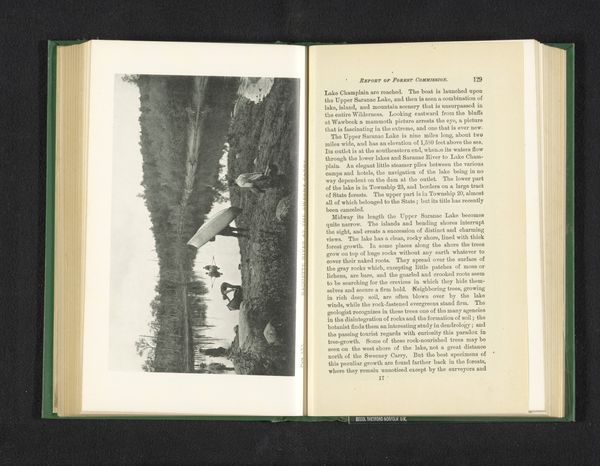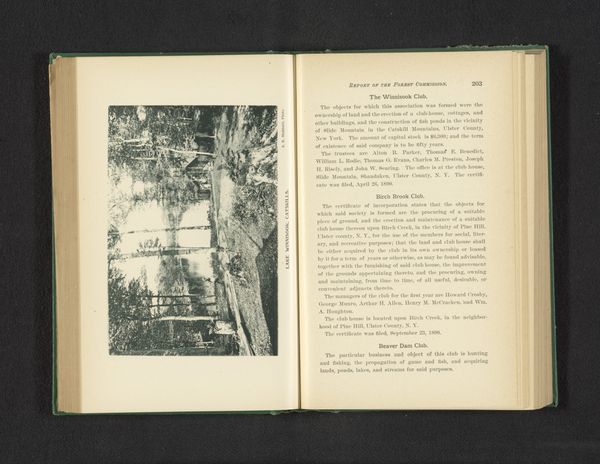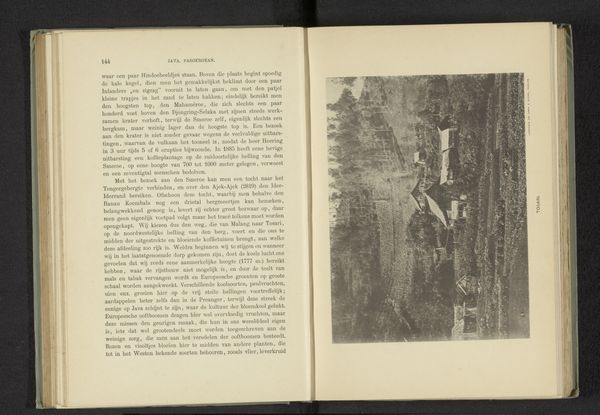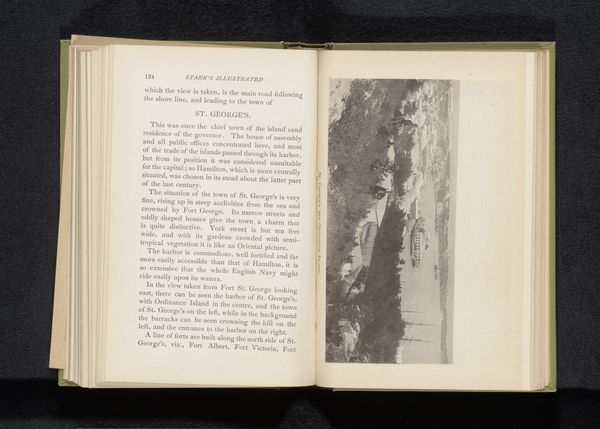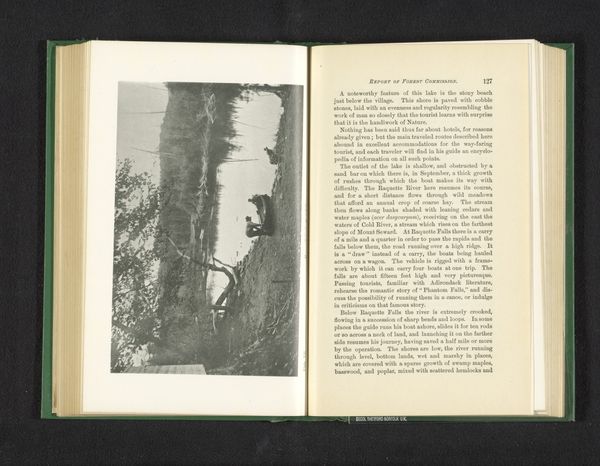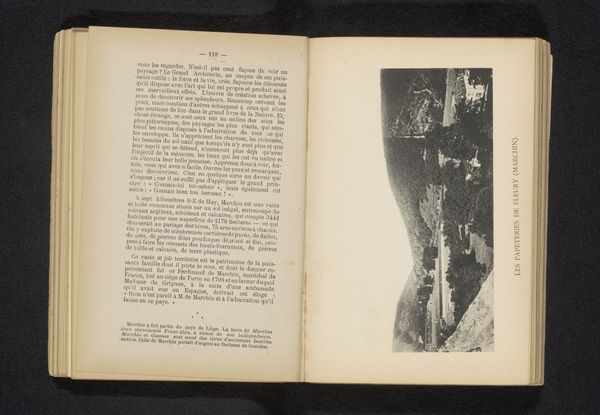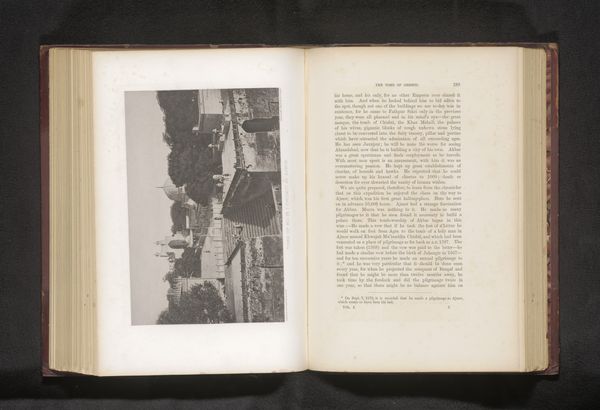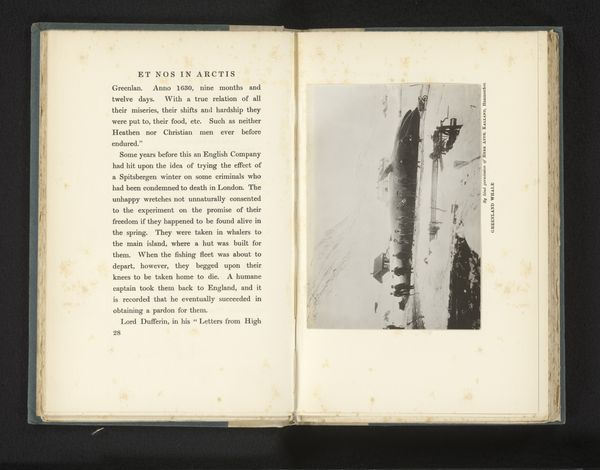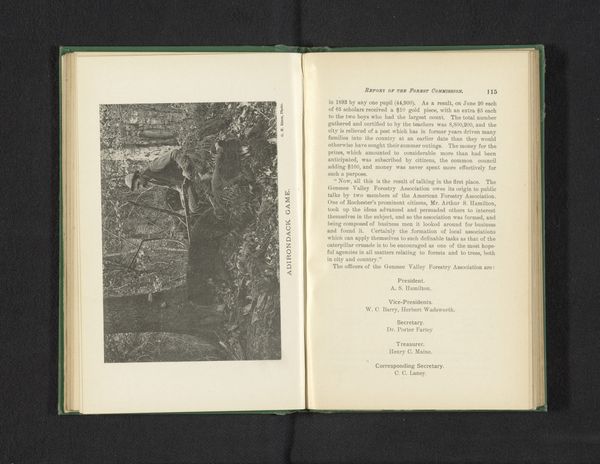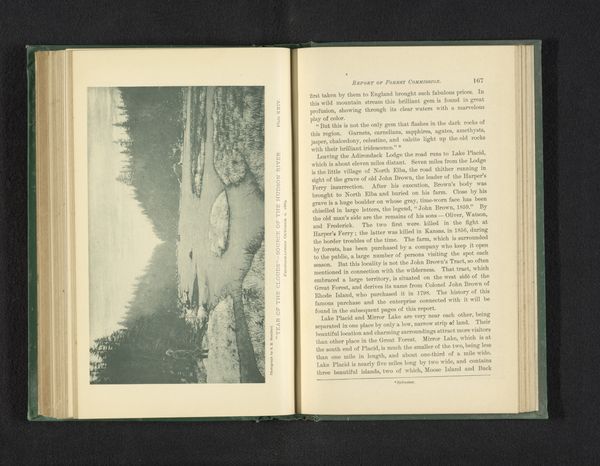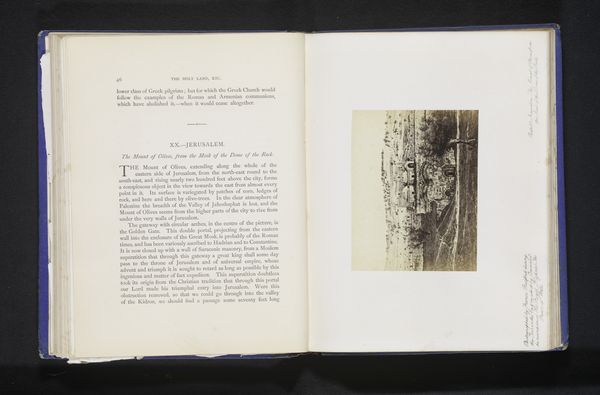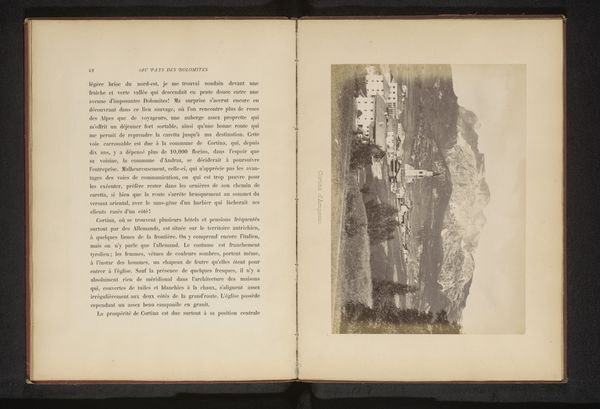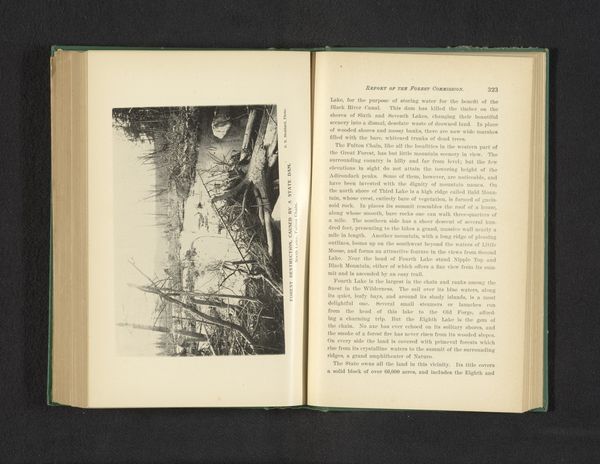
#
aged paper
#
homemade paper
#
paper non-digital material
#
paperlike
#
sketch book
#
personal journal design
#
paper texture
#
personal sketchbook
#
journal
#
paper medium
Dimensions: height 113 mm, width 177 mm
Copyright: Rijks Museum: Open Domain
Curator: Let's talk about this page from a journal, titled "Outlet of Stony Creek Ponds (State land)." Seneca Ray Stoddard created it in 1891. The journal employs paper as its primary medium. What are your first thoughts? Editor: There's a certain stillness that emanates from this scene. The muted tones and the verticality of the image convey a quiet solitude. I'm drawn to the water reflecting the towering trees and what seems to be a modest human construction of some kind. There's an almost dreamlike quality to it. Curator: That tranquility speaks volumes considering the complex relationship between nature, ownership, and resource extraction at the time. Seneca Ray Stoddard, like many artists of his era, documented landscapes during a period of intense industrialization and debates about conservation. Journals served as tools of preservation. Editor: I agree. The outlet represents more than just a geographic feature; it's a symbolic convergence. The water, a classic symbol of life and renewal, meets the fixed structures, reflecting the tension between the wild and cultivated. We see a meditation on boundaries and the imposition of human will onto the natural landscape. Curator: Absolutely, the act of surveying and documenting land also reflects an impulse to control and define it, often with political implications. Consider the historical context: this land is defined as "State land," implying prior dispossession, where access to the land was contentious at best. Stoddard is participating in these issues, and journals like this could document changes in policies. Editor: So, even what seems like a purely scenic landscape can be understood as carrying embedded meanings, anxieties, and assertions related to power, property, and shifting values concerning wilderness and civilization? Curator: Exactly. By understanding how land and access were negotiated through art, we can start to address present-day injustices relating to environmental racism, land rights, and dispossession. Editor: What struck me at first as simply a serene image reveals deeper cultural currents once we look at it through your lens. Now I’m left contemplating the ongoing dialogue between humanity and nature, and how images like this one can speak volumes about that relationship. Curator: Yes, and hopefully, this image reminds us that landscape is never neutral, but always reflects and reinforces social and political realities.
Comments
No comments
Be the first to comment and join the conversation on the ultimate creative platform.
